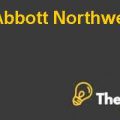
1A. CUSTOMER LIFETIME VALUE
The customer lifetime value is the predicted net profit that a firm can derive from the customer over the life of the customer with the company. This is the total value of the dollar amount which will flow from the customer towards the firm over their entire relationship with the company. The customer lifetime value is calculated by calculating the total forecasted revenue to be derived from the customer and the total costs that would be required for delivering those products to the customer. The remaining expected life of the customer is then forecasted. The net profit value is then discounted back, which is the customer lifetime value. However, in this case, the total expected costs were not given therefore the total expected revenue over the remaining life of the customer has been calculated, which in this case would be customer lifetime value. Discounting has been ignored as required by the question.
The customer lifetime value of all the three customer segments in Appendix A show that neutral customer segment has low CLV, while highly satisfied customers have a higher CLV. This has implications for the company’s marketing programs and future marketing efforts. The customers with high CLV will be treated differently than those with lower CLV. The company will have to spend more to retain its highly satisfied customers and maintain their high level of satisfaction with the company’s products. The company will have to focus on offering them differentiated products at low costs. The customer lifetime value is an easy tool to use to derive lifetime benefits with marketing efforts by retaining highly profitable customers.
|
CUSTOMER LIFETIME VALUE |
||||
|
Neutral Customers |
Satisfied Customers |
Highly Satisfied Customers |
||
| Average rental transactions per year with your firm |
3 |
5 |
12 |
|
| Average revenue per transaction |
$200 |
$290 |
$410 |
|
| Average customer life with your firm (years) |
1.5 |
2.5 |
6.3 |
|
| Average revenue per year |
$600 |
$1,450 |
$4,920 |
|
| CLV ($) |
14,697 |
80,060,815 |
181,710,551,895,557,000,000,000 |
|
1B. TARGETING CUSTOMER SEGMENTS
If the management of the company wanted to target two of the three customer segments than the management should target the satisfied customer segment and the highly satisfied customer segment.
SATISFIED CUSTOMERS
The satisfied customer segments seem to enjoy the services of the company. They consider the car rental services of the company as reliable and a good service. Apart from that another reason for targeting the highly satisfied customer segments is that the average car spending per customer per year cost is also lower as compared to both neutral and highly satisfied customers although the number of travel days for work is only 35 days. The size of this segment is also good. 3 million customers exist in this segment and looking at the CLTV, this would prove to be profitable for the company. However, the company will have to maintain the same level of service for the customers of this segment so make the expected profits realizable.
HIGHLY SATISFIED CUSTOMERS
The other segment that the management of the company could target is the highly satisfied customer segment. This segment has the largest customer lifetime value. The average car rental cost per average customer is around $ 8,000 which is similar to that of neutral customers. Therefore, this means that the cost is also not significant. The size of this segment is also good of around 3 million customers. This segment can really help the company to grow with its maximum profitability. However, the representative responses to the surveys reveal that the company will have to invest heavily in these customers. If the company deviates from providing them with constant high quality service, the company might lose these customers and their respective profits. Therefore, the company will have to retain these customers, though extra marketing efforts to yield maximum profits from them.
1C. CONTRIBUTION OF BRAND EQUITY IN CUSTOMER LIFETIME VALUE
Brand equity is basically defined as the value of a brand through which the company can generate more money from the products under that brand name than from those products that are sold under a less known name. Companies can create brand equity by making their brands different, memorable and unique in terms of quality and services. By creating brand equity for the company’s products the company can really enjoy the benefits coming from the loyal customers and also support its brand extensions. The company with high brand equity has the capability to be perceived differently for its products' performance.
Brand equity therefore, contributes to the customer lifetime value. High brand equity creates loyal customers. They are then expected to stay for a longer period....................
This is just a sample partial case solution. Please place the order on the website to order your own originally done case solution.













